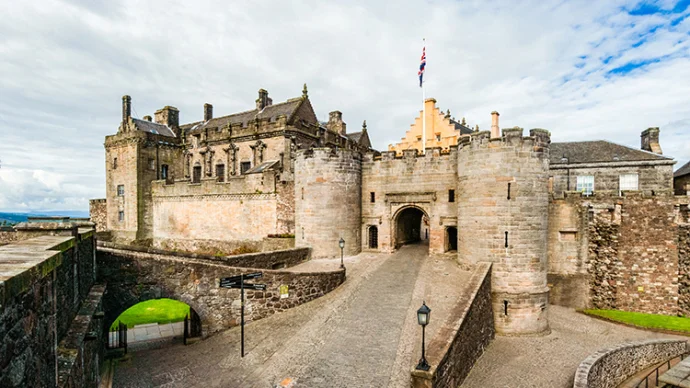
About Falkland Palace
Falkland Palace was the country retreat and hunting lodge of the royal Stuart dynasty. The palace was a particular favourite of Mary, Queen of Scots. Today, protected by the National trust for Scotland, highlights of Falkland remain its splendid gardens and portraits of notable Stuarts.
Falkland Palace history
A 12th century hunting lodge at Falkland was expanded in the 13th century to become a grand castle owned by the Earls of Fife – the infamous Clan MacDuff. The area, on a slight hill, was easily defendable and included a great wood of oak trees. The gardens, meadows, orchards and glades were encircled by a Pale (a ditch with a fence on top) to contain game for the royals to hunt. In 1317, Falkland was destroyed by the invading English army.
Inspired by French chateaus, Scottish Stuart Kings James IV and his son, James V, transformed Falkland Palace into a fine example of Renaissance architecture. Between 1497 and 1541, the monarchs imported oranges, had Dundee stonemasons adorn the palace, and were entertained by falconry, fiddlers, lutists, an African drummer and a seal from Pittenweem.
In 1541, a Royal Tennis Court was built in the garden, a game Mary, Queen of Scots was especially fond of, scandalously wearing men’s breeches to play. In December 1542, King James V died at Falkland after the Battle of Solway Moss, his only surviving heir the infant Mary.
Mary’s son, James VI and I of Scotland and England, sheltered from the plague of 1585 whilst negotiating the marriage to his wife, Anne of Denmark. James gave Falkland Palace to Anne as a ‘morning gift’ in case of his death. In the 17th century the palace was continuously used as a retreat for later Stuart kings, Charles I and II.
Although the palace fell into disrepair after 1660, the building was saved by the 3rd Marquis of Bute in the 19th century. These restorations included redesigning the gardens and making the castle once again fit for noble residence.
Falkland Palace today
Step back into the lives of Scotland’s most notable family, walking through the palace to see tapestries, beautiful painted ceilings and the world’s oldest tennis court. Mass is still said each Sunday morning in the Chapel Royal.
Wander the historic orchard including a living willow labyrinth and marvelling at the impressive formal gardens designed by Percy Cane. After exploring the gardens, stop by the tearooms for a cup of tea and some cake.
Getting to Falkland Palace
Driving from Edinburgh, takes 55 minutes along the A92 and there is parking in the village. Via public transport, get the train from Edinburgh Waverley to Markinch before getting the 5 and 64 buses to the palace.
Featured In

Mary Queen of Scots
Discover the historical places relating to Mary Queen of Scots, from Fotheringhay Castle, Lochleven Castle, and more.

10 of the Best Historic Sites in Fife
Discover the best historic sites in the county where golf was born.




















